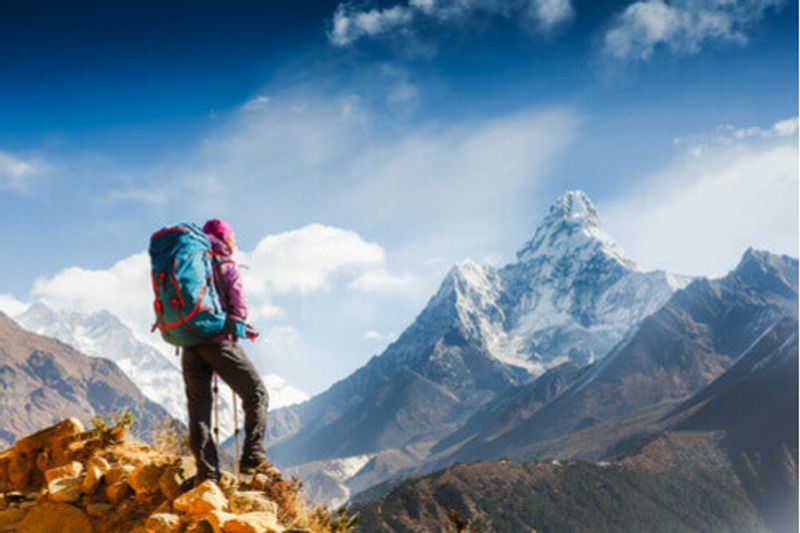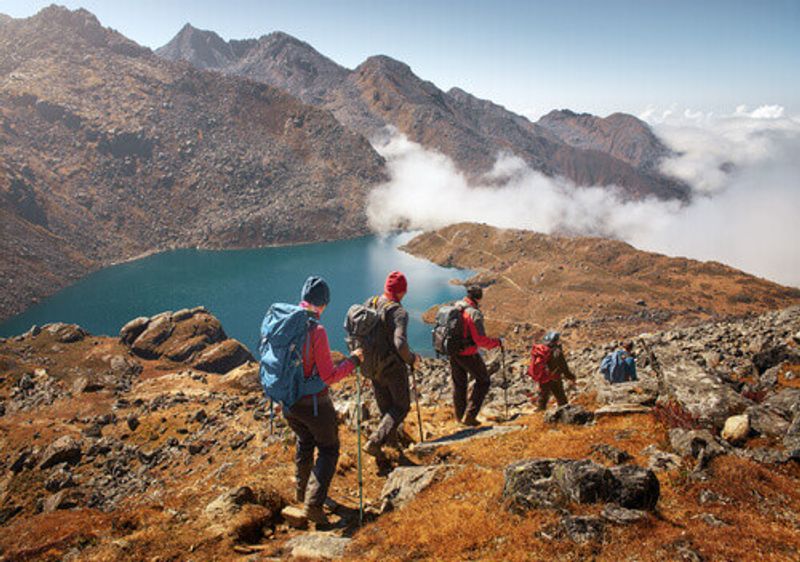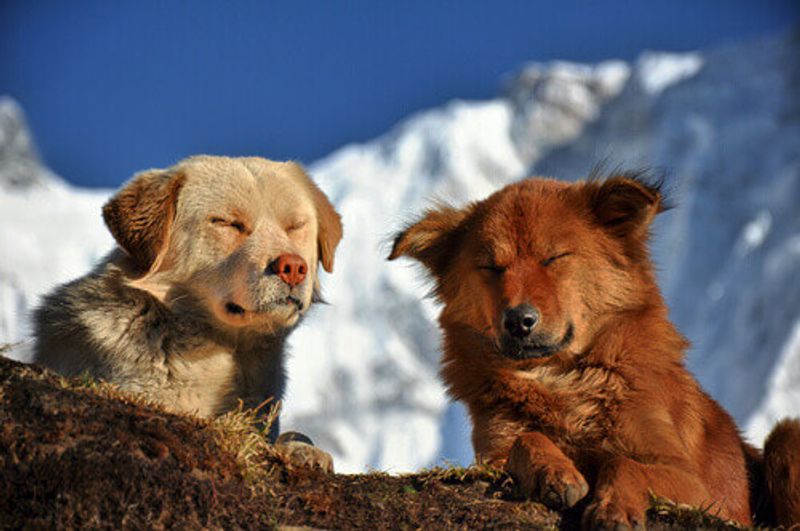The untouched Himalayan mountain range is home to dozens of the world’s highest peaks, crystal clear lakes and some of the rarest animals on earth
At a mere 60 million years old, the Himalayas are one of the youngest mountain ranges on earth. They may be young but they sure pack a punch. The world’s highest mountains are still growing taller by about 5 mm every year. This is because the huge landmass known as the Indian tectonic plate is still slowly crashing into the Eurasian plate, at a rate of 7 cm per year. In another 10 million years the Himalayas will be another 1,500 kms further into Asia and the peaks will be even higher.
But the Himalayas weren’t always the top of the world. In fact, fossilised remains of sea shells on the highest peaks shows that at one point – around 450 million years ago – Everest was under the sea. Today are more than 50 peaks at over 7,200 metres above sea level with the highest being Mount Everest at an astonishing 8,848 metres. Both the Himalayas and the Karakorum mountains (along the China-Pakistan border) are caused by these two plates colliding and are home to all the world’s highest peaks. The highest mountain outside this area is Peru’s Huascaran mountain in the Andes at a mere 6,768 metres.
The Himalayan mountain range divides the two enormous economic powerhouses of India and China with the countries of Bhutan and Nepal sitting high up, on the dividing line.
This high-altitude mountain range, has dozens of permanently snow-capped peaks and also some of the most incredible crystal water lakes made from melt water from the 15,000 glaciers. These Himalayas are the starting point for some of the world’s most important rivers including the Ganges, the Brahmaputra and the Indus, that go on to sustain most of the south Asian subcontinent.
Himalayas means ‘Abode of Snow’ in Sanskrit and is known as Giri-raj meaning the King of Mountains in Hindu. The high altitude and difficult terrain means that the Himalayas are mostly unpopulated and incredibly isolated. Only around 50 million people live in the entire Himalayan region and, after Antarctica, it is the second least visited place on earth.
This isolation makes perfect breeding ground for wild animals and the diverse range in climates from the subtropical foothills to the permanently snow covered peaks creates a vast biodiversity. Snow leopards, Giant Panda, Wild Yaks, Musk Deer as well as magnificent birds such as the Black Necked Tibetan Crane, Grey Bushchat, the Black Rumped Flameback Woodpecker all inhabit the range. It is still unclear however, exactly in which part of the Himalayas the Yeti lives.
The mythical Shangri-la – a bountiful land of plenty, where beautiful immortals live in an earthly paradise – is thought to be also in the Himalayan mountains. Made famous in James Hilton’s book Lost Horizons, China has today declared the town formerly known as Zhongdian in the western Himalayan foothills as the ‘official’ Shangri-la. However, the concept of a peaceful people living off the land, untouched from the modern world is suited to almost every Himalayan village. The natural barriers, the Buddhist philosophy and the bountiful resources certainly makes many Himalayan areas feel like heaven on earth.


